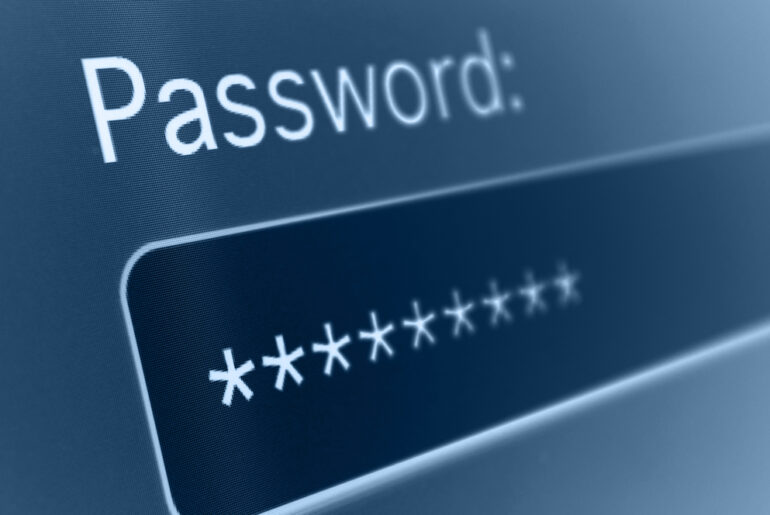While having a grasp of asymmetric and symmetric encryption isn’t necessary to use it, we wanted to dive into it anyway. This is the way your data is protected, and it’s good to know the details of how it works.
What is Encryption?
We’ve discussed this a number of times, but at its heart, encryption is the systematic scrambling of information. Before data is sent from your device, it is mixed up based on a “key.” It’s then sent to the destination device in a way that looks like gibberish if it were intercepted. On the other end, the second device uses its own key to decode the data and make it readable again.
There are thousands of different methods for encrypting data. Some, like a simple substitution cipher, just replace letters and numbers with other letters and numbers. A good example of this is “ROT13,” which moves every letter in the alphabet 13 spaces forward. So “A” becomes “N.” “B” becomes “O.” etc.
Obviously, this is a very simple cipher and is not used professionally anymore. Instead, modern encryption relies on much more complicated mathematical formulae and larger keys.

Asymmetric and Symmetric Encryption
The key to understanding the difference between asymmetric and symmetric encryption is the key.
A “key” is a string of characters that provides the “system” for the “systematic scrambling” that is encryption. Most keys these days are between 128 and 256 characters long, making them virtually unbreakable.
Before any of your data is sent, keys are exchanged. This allows your computer and their computer to work from the same instructions.
This is where the difference between asymmetric and symmetric encryption comes into play.

Symmetric Encryption
With symmetric encryption, both parties have the same key that they exchange directly. Have you ever seen a movie where somebody passes a note to somebody else while shaking their hand? It’s a lot like that. When both computers have the same key, they can freely encode and decode messages to one another.
This is a faster way of encrypting data and is very popular. AES and SSL are both symmetric encryption methods for the most part. They also use shorter, simpler keys, making data processing much quicker.
The issue with symmetric encryption is fairly obvious. What’s protecting your key from being seen at the beginning of the exchange and stolen? This is where asymmetric encryption comes into play.
Asymmetric Encryption
Asymmetric encryption splits the key into two parts: a public key and a private key. The private key is kept on the computer and the public key is exchanged. Both computers use the public key with their private key to make what’s called a “session key.” Those are only to be used for this one data exchange, then discarded.
Because the session key requires both the public and private keys to be created, hackers can’t replicate it. They’ll never see the private key portion, so they can’t decrypt the data.
Asymmetric encryption algorithms also tend to include digital signatures. These are messages encrypted with the original private key that the recipient computer can use to verify that the message came from the right place. It’s very complex and outside of the scope of this article, but you get the idea.
There are two big disadvantages to asymmetric encryption, however.
- It’s not that much more secure than symmetric encryption. With the public key, somebody could figure out the private key. However, that would take trillions of years for the world’s fastest supercomputer to do, so you should be fine.
- It’s slower. Because it uses larger and more keys, it takes longer to process all the data.

Which Encryption is Better?
Neither. Both have advantages and disadvantages that need to be considered.
If your main concern is speed, then symmetric encryption is the choice for you. If security is more important, then you want to use asymmetric encryption.
Often, the software will use both. For example, one of the most common ways of approaching encryption is to exchange keys using asymmetric encryption, then use the shared keys for symmetric encryption of the rest of the data.
SSL encryption uses both methods in this fashion. Have you noticed that more websites start with “https://” instead of “http://”? That “S” stands for “security” and indicates that your data to and from that site is encrypted. When something is an HTTPS site, it will exchange keys with you and check your digital signature before sending or receiving any data. This keeps you as safe as possible from people watching your connection.
The best way to ensure that your encryption is as strong as possible is to use a VPN like PrivadoVPN. We utilize a 256-bit-AES cipher and a combination of asymmetric and symmetric encryption to protect your privacy online.
Download PrivadoVPN
Protect your privacy with a world-class VPN. Sign up for premium access to PrivadoVPN and get unlimited monthly data, access to 300+ servers from around the world, and up to 10 simultaneous connections. Get a top-rated VPN that can secure your privacy at home, at work, or on the go.
Sign up for PrivadoVPN today!




